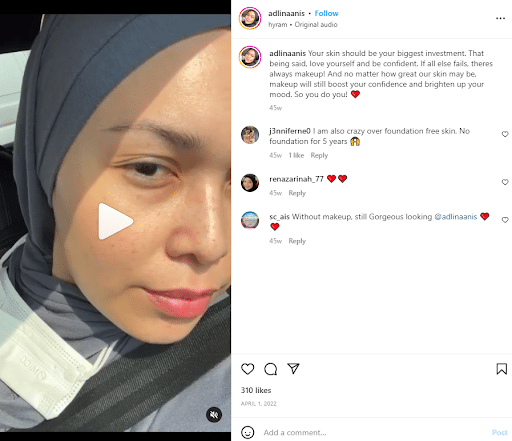
The role that beauty influencers in Singapore play in the highly digitalised world has been one that is almost understated. If we draw a Venn diagram for social media channels and the beauty industry, we will notice that fundamentally, they are similar. Both are driven by sight.
Increasingly, more brands locally are dipping their brushes into strategizing Influencers in their outreach recipe after observing global brands’ success. For instance, Superstar Beauty Influencers such as Jeffree Star, Huda Kattan, Nikkie de Jager … have made AND break brands. It is clear that Beauty Influencers have the necessary authority to almost seemingly dictate consumers what they should have in their makeup bags.
Beauty influencers are similar to the industry they stand for. They are dynamic, creative, and more importantly, visually impactful. Their creative ability in head-turning looks and providing sound recommendations are what brands leverage. They are quite literally your “proof-of-concept” and here are the following reasons why Beauty Influencers can be your advertising ally.
It is no news that influencers today relate to audiences today. Beauty Influencers, on the other hand, add a touch of empowerment magic. Their game is all about enhancement. Beyond being malleable, it is a prerequisite they should be a good canvas for beauty products. It is only logical that what they endorse are actually things they can vouch for.
As demonstrated by @adlinaanis, her natural skin is evidence that she makes informed decisions about the line of products she endorses.
When she puts her face forward for a beauty product, it automatically adds to the brand’s credibility in what they are meant to do.
Credits: @adlinaanis
Influencers are known to be relatable figures that are able to drive meaningful numbers. By that, it is meant that engagement rates are actually genuinely from the targeted audience. The spike in current #GRWM has evidently stirred up a wave of attention from beauty influencers. Taken from a first-person point-of-view, the hashtag has drawn in higher intimacy levels and makes advertising feel like a friend-to-friend form.
Credits: @mongabong
This hashtag went beyond beauty influencers and attracted various field influencers onto the bandwagon.
Credits: @heyitsfel
With an average engagement rate of 3.97% (industry’s standard is about 1.39%), @heyitsfel has proven that micro-influencers truly do have the potential to persuade her audience into becoming your brand loyals.
The infamous DewyChoo saga is a prime example of how trends done by influencers can become viral. Unless you do own an account on TikTok or Instagram, TikTok Influencer, Dewy had managed to rally up a huge following for the dance trend that crawled its way back onto TikTok’s #fyp.
So, imagine if you paired with the right influencer AND had the right content.
The global beauty industry is currently valued at US$571.1 billion and is predicted to be worth US$663 billion by 2027. This is based on a modest rate of X/year. Since 2015, the average annual growth rate was approximately 8% per year.
Influencers and content creators in Singapore are catching onto this while adding their creativity flare. Their contextualised content enables high relatability and resonation which is simply what your Brand needs today.